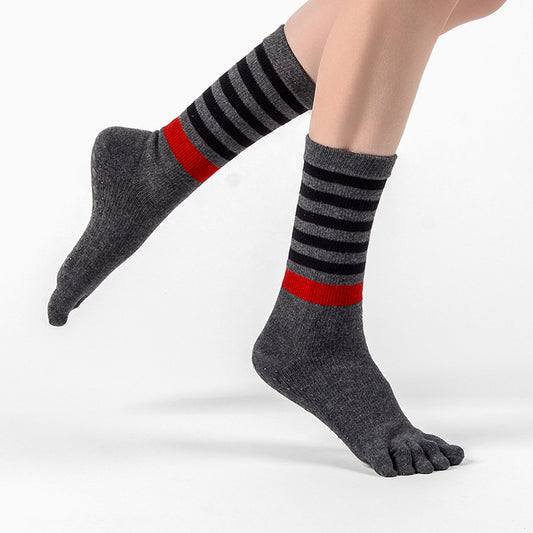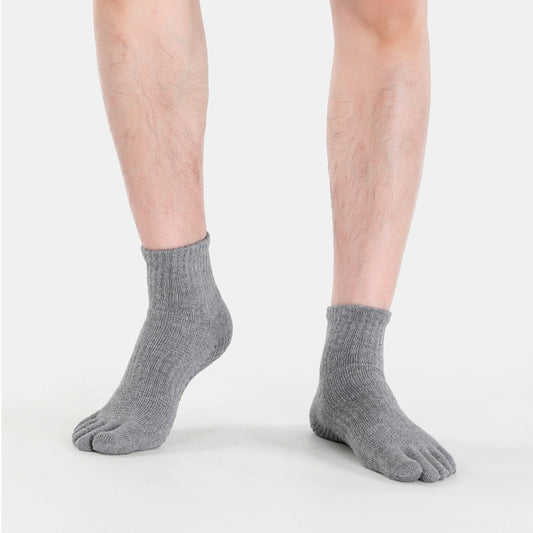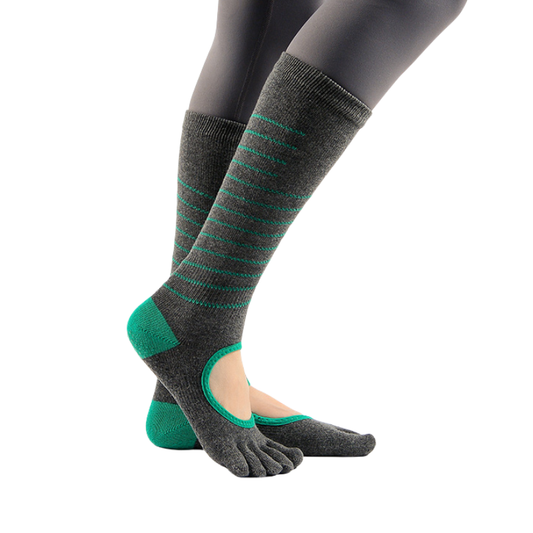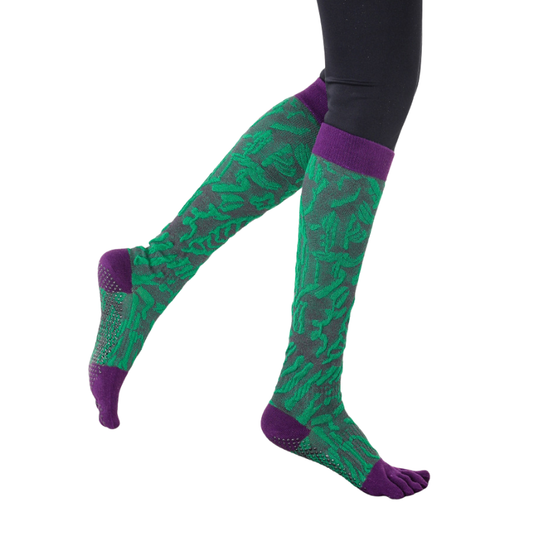Ensuring patient safety is one of the most important responsibilities in any healthcare environment. Each year, hundreds of thousands of patients experience falls during hospital stays, leading to serious injuries, longer recovery times, and increased healthcare costs. Among the simplest yet most effective tools hospitals use to prevent such incidents are non-slip socks. But why do medical professionals across the United States rely on these seemingly basic items to safeguard patients? Let’s explore the evidence, expert recommendations, and best practices behind the widespread use of non-slip socks in hospitals.
The Problem: Hospital Falls and Their Consequences
Falls are a leading cause of injury in hospitals, especially among seniors, surgical patients, and those with mobility challenges. According to the Centers for Disease Control and Prevention (CDC), between 700,000 and 1,000,000 people fall in U.S. hospitals each year. These accidents can result in fractures, head injuries, longer hospital stays, and sometimes even death.
The repercussions go beyond physical harm; falls often reduce patient confidence, delay recovery, and increase costs for both patients and healthcare systems.
What Are Non-Slip Socks?
Non-slip socks—sometimes called “grip socks” or “hospital socks”—are specially designed socks with textured soles that provide traction on smooth hospital floors. Unlike regular socks, non-slip socks feature rubberized or silicone treads that help prevent slips and falls.
These socks are usually made from comfortable, stretchable, and breathable fabrics, ensuring that patients of all ages can wear them safely. Non-slip socks are available in a range of sizes, including pediatric, adult, and bariatric, and are often color-coded in hospitals to signify patient status or mobility risk.
Evidence & Guidelines: Non-Slip Socks in Clinical Practice
A growing body of clinical evidence supports the use of non-slip socks as part of comprehensive fall-prevention programs. For instance, a study published in the Journal of Clinical Nursing found that non-slip socks, when used alongside other interventions, reduced the risk of falls in high-risk patient groups.
Organizations such as the Joint Commission and the Agency for Healthcare Research and Quality (AHRQ) also recommend appropriate footwear—including non-slip socks—as a key strategy in their fall-prevention toolkits.
Why Hospitals Rely on Non-Slip Socks: Key Benefits
Non-slip socks are trusted by hospitals for several reasons:
-
Immediate Patient Protection: Non-slip socks are issued to patients upon admission, especially those at high risk of falls, providing instant protection even if patients are unable to wear shoes.
-
Accessibility and Comfort: These socks are soft, comfortable, and suitable for patients who are bedridden or have swollen feet.
-
Cost-Effectiveness: Non-slip socks are a low-cost solution compared to medical costs from fall-related injuries.
-
Patient Compliance: Many patients are more likely to wear socks than cumbersome footwear, improving compliance with fall-prevention measures.
-
Infection Control: Many hospitals use disposable or easily washable non-slip socks to minimize the risk of cross-contamination.
As highlighted by Johns Hopkins Medicine, these socks are an essential part of the hospital safety toolkit.
Real-World Applications & Hospital Protocols
Most U.S. hospitals have integrated non-slip socks into their standard patient safety protocols. Upon admission, nurses assess fall risk and provide appropriate footwear—often color-coded non-slip socks—to high-risk individuals. Hospitals like Mayo Clinic use training programs to educate staff on fall prevention, ensuring that socks are replaced and properly fitted as needed.
Some facilities use color-coded socks to indicate specific patient needs (e.g., yellow for high fall risk), improving communication between care teams and enhancing overall patient safety.
Limitations and Considerations
While non-slip socks are highly effective, they’re not a standalone solution. Some limitations include:
-
Flooring Issues: Extremely slick surfaces may still pose a risk, even with grippy socks.
-
Severe Mobility Impairments: Patients who are unable to move safely may need additional assistance or mobility aids.
-
Fit and Wear: Ill-fitting or worn-out socks may lose their effectiveness.
Hospitals typically use non-slip socks alongside other interventions, such as bed alarms, mobility aids, and patient education, to create a robust fall-prevention strategy (AHRQ guidelines).
What to Look for in Quality Non-Slip Socks
When selecting non-slip socks for hospitals or home care, look for:
-
Material Safety: Latex-free and hypoallergenic options are best for sensitive patients.
-
Grip Durability: Treads should withstand repeated washing.
-
Proper Fit: Socks should cover the entire foot and fit snugly without restricting circulation.
The Role of Non-Slip Socks in Home Recovery
Non-slip socks are also widely used in home care, rehabilitation centers, and senior living communities. They offer a simple way for patients recovering from surgery or illness to reduce their risk of falls once they leave the hospital. The National Institute on Aging recommends non-slip socks as part of a holistic approach to fall prevention at home.

Conclusion
Non-slip socks may appear simple, but their role in patient safety is profound. Trusted by hospitals and recommended by leading healthcare organizations, these socks offer a practical, affordable, and effective means to reduce falls and protect vulnerable patients. Whether in the hospital or at home, choosing high-quality non-slip socks is a smart step toward better health and peace of mind.







